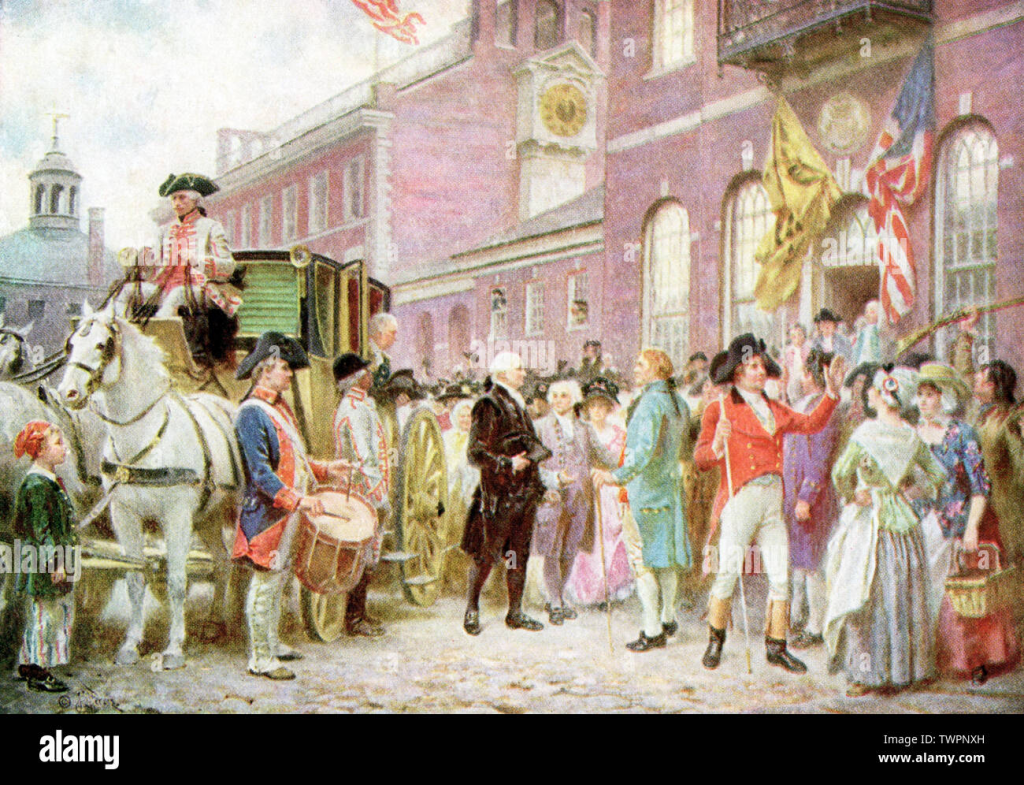On March 4, 1793, George Washington took the oath of office for his second term as President of the United States. While his first term had been marked by domestic concerns, his second term would increasingly focus on the international stage. At the forefront of these concerns was the French Revolution—a seismic event that not only rocked France but also deeply impacted the young United States.

The year 1789 was a pivotal one for both countries. Just three months after Washington’s first inauguration, the storming of the Bastille on July 14th sparked the French Revolution. Americans cheered, seeing it as a continuation of their own fight for freedom. After all, both revolutions were rooted in Enlightenment ideals. However, the paths they followed were vastly different. While the American Revolution had led to a relatively peaceful birth of democracy, the French Revolution descended into chaos, with the streets of Paris running red with blood.
Why the stark contrast? Both revolutions began with popular unrest, but the American elite quickly took control, steering the revolution toward stability. Leaders like John Adams, Alexander Hamilton, and Benjamin Franklin demonstrated a commitment to reason and order. Their opposition to violence and their respect for governance ensured that the American Revolution did not spiral out of control. On the other hand, France’s intellectual elite lacked the practical experience to lead effectively. Many came from aristocratic backgrounds, detached from the realities of everyday life, and failed to build the kind of coalition that could prevent the revolution from turning violent.
The French Revolution, unlike its American counterpart, was deeply affected by France’s rigid class system. There was no middle class that could balance the competing interests of the nobility and clergy, as was the case in America. The French Revolution, driven by economic crisis and social inequality, quickly spiraled into a struggle between the people and a monarchy that had no semblance of American-style governance. The French had no precedent for representative democracy, and the chaos that followed was inevitable.
Despite these differences, both revolutions were inspired by the same ideals of liberty. However, in America, liberty was something people were accustomed to, something they were fighting to protect. In France, liberty was a new concept, a prize to be won at great cost. And win it they did, but the road to freedom was soaked in blood.
Interestingly, the French Revolution had a role in sparking its own turmoil. In a bid to support the American Revolution, King Louis XVI had bankrupted France. Even without the American aid, the French monarchy was already in dire financial straits, and by May 1789, the king was forced to convene the Estates-General, which eventually became the National Assembly. As the Third Estate (the common people) broke away and declared themselves the true government, the revolution ignited in earnest.
The storming of the Bastille in July 1789 was a defining moment. Despite the revolutionary fervor, the fortress prison housed only seven prisoners, and the “liberators” found little to justify their bloodshed. Yet, they beheaded the prison governor and paraded his head on a pike, signaling the beginning of a brutal period of violence. As Thomas Jefferson, then the U.S. Ambassador to France, wrote, “There are heads in the street, and no one knows if theirs is still attached.”
Amid this chaos, Lafayette, a hero of the American Revolution, tried to stabilize the situation. Appointed to command the National Guard, Lafayette worked to maintain order and even drafted the Declaration of the Rights of Man and of the Citizen, inspired by America’s own Declaration of Independence. However, despite his efforts, the revolution would continue its bloody course. In 1791, Lafayette resigned in frustration after the National Assembly abolished the privileges of the nobility. He had hoped for a constitutional monarchy like Britain’s, but France’s path was irrevocably different.
As the French Revolution descended into terror, the people found themselves torn between factions. The Jacobins, led by figures like Robespierre, pushed for radical change, believing that violence was necessary to achieve liberty. The king was executed in January 1793, and France declared war on Britain and other European powers, marking a new phase of instability.
For the United States, the French Revolution presented a dilemma. The young nation was bound by a treaty with France, and many Americans, particularly Jefferson and his allies, supported the French cause, viewing it as a noble struggle for liberty. But Washington, Hamilton, and their Federalist allies were wary. They knew that aligning too closely with France could provoke Britain, with whom they still traded heavily. In a pragmatic move, Washington declared neutrality, choosing to prioritize American interests over revolutionary ideals.
The clash of ideals in the French Revolution would go on to influence the United States for years to come. While Americans celebrated the virtues of liberty and self-governance, the violence in France served as a cautionary tale. Washington’s warning to Lafayette to maintain order was not just a plea for peace—it was a recognition that revolution without restraint could lead to disaster.
In many ways, the French Revolution was a precursor to the challenges of modern democracy. It highlighted the dangers of radicalism and the importance of balance in political movements. The lessons of the French Revolution—of the need for stability, order, and the protection of individual rights—still resonate today, reminding us that the pursuit of freedom must be tempered with responsibility.
As we reflect on the French and American Revolutions, it’s clear that both shaped the world we live in today. From the streets of Paris to the halls of the U.S. Capitol, the echoes of these revolutionary movements are still felt. And just as these revolutions challenged the old world order, they continue to inspire those fighting for freedom and democracy across the globe.

No comments yet.